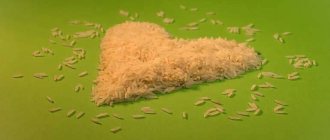Pros and cons of water fasting
Abstaining from food for a short period is a beneficial procedure for the human body. The water diet method is considered by its supporters as a panacea for chronic diseases, excess weight, inflammatory processes, and to improve sleep.
Then other positive changes occur:
- body cleansing,
- weight loss,
- recovery,
- rejuvenation,
- getting rid of diseases.
There are two types of hunger strike:
- classic, water - it is recommended to drink a lot of liquid, only the consumption of foods is prohibited
- dry - practiced less often, more harsh towards the hungry, it is forbidden to drink or even come into contact with liquid.
The method involves refusing to eat, but allows the consumption of water, preferably distilled (as much as you want).
The water diet can be limited to a few days or continued for a full period. Abstaining from food will help restore health.
Not every body can withstand a long hunger strike, which can bring not only good, but also harm. Experience, tests, and consultation with a doctor are required. Limitations may include illnesses:
- gastrointestinal tract,
- oncological,
- heart complications
- diabetes.
Medical contraindications affect the duration of the water diet for a period of 1-3 days. If there are no restrictions, then preliminary preparation for the procedure will be required.
Therapeutic fasting for 21 days once a year can:
- normalize digestive processes, hormonal levels,
- heal joints,
- neutralize inflammatory, congestive phenomena,
- get rid of infertility, allergic reactions,
- increase stress resistance.
Deterioration is also possible and is manifested by the following side effects:
- dizziness,
- fainting,
- physical weakness
- drowsiness,
- heat,
- chills,
- splitting of nails,
- joint pain,
- hair loss.
How to break a one-day fast
A one-day fast involves following an eating pattern known as intermittent fasting. The system of intermittent fasting with such a short period of abstinence from food does not provide specific recommendations for exit, so let’s turn to other sources. Paul Bragg and Herbert Shelton recommend giving up food for a day once a week. We remember the main rule: the entrance and exit from fasting are equal in duration.
It is best to start with juice, let it become a light breakfast for you. After 5–6 hours, the body will return to its previous rhythm, then you should have lunch with cabbage and carrot salad. Alternatively, you can eat steamed vegetables or applesauce. Protein foods can be left for the evening.
From the next day, you can eat your usual dishes, but do not rush into food, eat half of your usual portion, and chew your food thoroughly. The way out of a one-day fast is the simplest.
If you have chosen a dry fasting scheme, then you need to start by drinking water in small quantities, then replace the water with juice. On the second day, you can eat a light salad or fruit puree. Dishes that have undergone heat treatment can only be eaten on the third day. Similar to a one-day fast, you need to start with half the usual portion.
Harm and benefits of dry 21-day fasting
Dry food refusal is attributed to the body’s natural way of ridding the body of harmful and toxic substances and fatty deposits.
Points of view on a dry diet are extremely contradictory. Some consider the procedure to be a cure for pain and a panacea, while others consider it a mockery of the body.
Read also: Does black pepper help with diarrhea and how to use it: instructions and contraindications
Such methods of refusing food are appropriate for numerous pathologies, but not always. The technique has disadvantages that can cause irreparable damage to health.
The meaning of a dry fast is to lose weight and comprehensively improve the body. Lack of fluid leads to the breakdown of fat deposits and glycogen in muscle tissue. Losing weight happens quickly.
Studies have shown that prolonged abstinence from water has a devastating effect on the tissues of the human body. The capillaries are not cleaned and are often completely destroyed.
The blood becomes thicker, loses its ability to remove toxins and transport nutritional ingredients.
Conscious refusal of liquid leads to such sad results - dehydration of the body.
The advantages of dry fasting are a strong psychological shock that can give a tangible impetus to life. This is not always beneficial, and the result depends on the patient who received such doping.
People who go on hunger strikes for the sake of health should take a better look at the water diet - an old and proven method.
How to break a 7-day fast
- Emergency exit (1–2 days). This solution can be classified as drastic measures; it can be resorted to only under the supervision of a doctor. On the first day you eat cabbage and carrot salad, you can add an apple. You cannot dress the salad. For dinner you can eat stewed vegetables. From the second day, you can add a few drops of olive oil to the salad. Salt and spices are prohibited. You can drink juices diluted with water. This option is acceptable for those who do not have health problems.
- Out in 4 days. The diet will be the same, but from the third day you can add fermented milk products. It is better to avoid meat and legumes. With this option, you can begin to perform simple physical exercises.
- Recommended (7 days). As you already remember, the exit from fasting is equal to the period of abstinence from food, so this option will be optimal. The first day you can drink juices diluted with water, keep the ratio 1:1. You should not drink more than 2 liters of juice per day. The second day you also need to drink only juice, but not diluted. On the third day, the body is ready to work as before, but you should not overload it. Eat vegetables and fruits, you can eat light porridge. On the fourth day you can eat vegetable soups and purees. On the fifth day, you can introduce a small amount of fermented foods into your diet. From the sixth day, you can add salt to your food, and you can also introduce porridge into your diet: oatmeal or buckwheat would be a good option. From the seventh day, you can start eating as before, but remember an important rule: the portion should be half the usual size.
Procedure
The process of cleansing by refusing food includes three stages. following which will improve the result and make the practice as easy as possible.
We recommend reading
- Features of dry and wet seven-day fasting
- How spiritual practices relate to fasting
- How to break a water fast
Entrance
It is advisable to start preparations three months to two weeks in advance by giving up bad habits, walking, therapeutic exercises, and adjusting the diet.
Meals should be vegetarian and correspond to the approximate menu for breaking a 21-day fast. It is preferable to consume raw vegetables, boiled beets, water, juices without self-restraint. Loads are desirable, but moderate.
Already at the stage of preparation for giving up food, the body will begin to eliminate toxic ingredients, slag waste, the mood will improve, and lightness will appear.
The entry procedure itself lasts about two to three days and is an adaptation period. The body is rebuilt and gets used to the regime of consciously avoiding food. A hungry person may be concerned about:
- weakness,
- nausea,
- insomnia,
- dizziness,
- hunger.
The patient reacts painfully to the slightest mention of food, the gastrointestinal tract works vigorously, and stomach pain is possible.
A hunger strike is accompanied by accelerated weight loss caused by the active removal of fluid from the body. At this stage, discipline, self-control of the patient, walks, thoughts that distract from food and help cope with therapeutic fasting are important.
Read also: Causes of constipation in children of different ages
Instructions from a psychologist explaining the positive aspects of the process are appropriate.
Starvation
The human body switches to internal reserves within 5-7 days. Then an acidotic crisis sets in, and weight loss slows down, which is caused by saving resources. It is recommended to compare your personal weight loss statistics with the weight loss chart.
The body is forced to get used to the lack of external nutrition, has completely rebuilt itself and produces the necessary substances using internal supplies. The patient's memories of food are less and less frequent.
The sensations and well-being of a patient who has been fasting for more than 10 days change. You should fast and continue the procedure under the supervision of a doctor. Tests at this stage indicate an improvement in blood composition.
The patient's tongue becomes coated, which can be removed by rinsing the mouth. After two weeks of fasting, body weight will decrease daily by 0.3-0.5 kg. The absence of food is perceived more softly, the feeling of hunger is dulled.
Movements should be smooth so as not to cause low blood pressure or dizziness. If your health suddenly worsens, you should interrupt your fast and consult a doctor.
Exit
Exiting the 21-day fast should be done in stages. A long-term (more than twenty days) water diet is a powerful shake-up for the body. People fasting at home need to exit the procedure smoothly and correctly (taking into account the doctors’ instructions and menu).
Rules for conducting a 21-day therapeutic fast at home
- During the hunger strike, it is prohibited to consume alcohol, drugs, smoke, or drink coffee.
- Taking medications is canceled from the first day. The final decision on the advisability of using medications is made by the attending physician.
- Complete ignoring of food is accompanied by daily procedures: enemas using 1.5 liters of water, contrast showers.
- Walking, therapeutic exercises, sun and air baths are recommended.
- Sleep should be at least eight hours (in a well-humidified and ventilated room).
- During the therapeutic diet, medical monitoring of the general condition of the fasting person, measurement of pulse rate and blood pressure are required.
What information is missing from the article?
- Real reviews about the practice
- Experts' opinions
- Photo and video reviews
- More menu options for preparation and exit
Therapeutic fasting: how to enter and exit correctly
During the fasting process, entering and exiting the practice is equally important. The most common mistake is when a person simply refuses to eat for a day, and then consumes various dishes with a vengeance. This is not fasting, but torture for the body. General recommendations for entry may be as follows:
- Motivation. Understand why and why you are doing this, make a decision and do not deviate from your intended goal.
- Change your diet. Give up fast food and soda, eat light meals. A week before starting your fast, give up meat and fish. Eggs should also be excluded a week before the start of practice.
- If you smoke, reduce the number of cigarettes. You cannot smoke on a fasting day.
- Set aside a day to fast when you can stay at home. Daytime naps will be helpful.
- Drink more water.
- Start fasting in the evening by skipping dinner.
General recommendations for breaking fasting.
- The duration of the exit is equal to the days of fasting. If you fasted for a week, then the exit from the practice will also be seven days. This must be taken into account when choosing a fasting regimen.
- When going out, eat small meals.
- Increase the amount of food gradually. It is better to add one or two products every day.
- After fasting, you should not eat salt and seasonings, as well as fatty and protein foods.
- After fasting, you should not drink tea or coffee.
- The first product for you, regardless of the duration of fasting, should be juice. First, drink juice diluted with water, then gradually switch to regular juice. The juice should be drunk in small quantities every 2 hours.
- Then include fermented foods in your diet.
What results can you achieve?
21 days without food is a serious test for the body. Prolonged fasting is accompanied by a loss of up to 25% of weight. Healing processes are launched at the molecular level, giving rise to the cleansing and rejuvenation of the body. Defense forces and metabolic processes are mobilized, and the endocrine system is “shaken up.”
Read also: Recommendations and review of methods for removing stones from the ureter in men
The body begins to heal itself. First, dead cells are removed, then diseased cells. Healthy tissues, all organs, after 2-3 days of hunger strike are programmed for independent healing.
After consciously refusing to eat, sleep and well-being improve, a positive attitude appears, symptoms of chronic diseases disappear, and the body is charged with energy. The joints and spine get rid of salt deposits and regain lightness and mobility.










